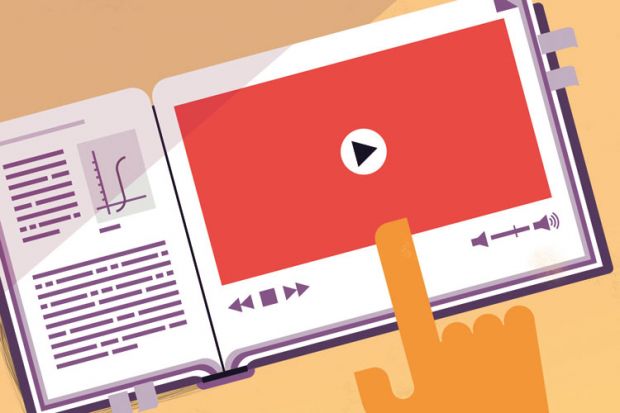Source: Eduardo Fuentes
Mention the use of television in university teaching and I suspect the first image that springs to mind for many academics, particularly those of a certain vintage, will be of a dowdy physicist spouting incomprehensible formulae – exactly the stereotype depicted in Harry Enfield’s recent spoof history of BBC Two, Harry and Paul’s Story of the Twos.
Rather fewer, in my experience, will be moved to think about the potential of broadcast media to enhance teaching within their own discipline. This is a huge pity. Academic colleagues – and by extension their students – are missing out on a rich repository of television (and radio) resources that might be used in all manner of ways to make their teaching more engaging.
So why are lecturers not making more of these resources? Many will simply not have considered the idea. For others, there may be a range of reservations, both ideological and pragmatic.
A common concern is that television programmes have insufficient academic rigour for university education. Yet today’s programme-makers often have budgets vastly in excess of anything we might receive to make engaging teaching materials, and it is possible to find nuggets of pure gold. While we might not agree with the final product, the ability to evaluate critically a source is a useful skill in any discipline and can provide a good starting point for useful discussion and reflection.
Others academics worry that watching a video is not “proper” teaching. The fact that videos can be abused by a stressed teacher as a tool for crowd control on a wet Wednesday, however, does not negate the merit of purposefully chosen footage, properly integrated into the university curriculum.
Some lecturers are unsure of copyright restrictions, but most universities are covered by the Educational Recording Agency licensing scheme, which grants permissions to reuse broadcast media (including programmes by The Open University) within specified educational parameters.
Meanwhile, contemporary tools can alert us to scheduling of interesting material. In particular, the Television and Radio Index for Learning and Teaching can be set up to send a weekly email containing details of upcoming programmes matching user-specified keywords. The Trilt database can also be used to find details about programmes broadcast previously. Most institutions have a service for recording TV or radio shows at the time of transmission, and you can also access an off‑air recording back-up service for earlier materials, run by the British Universities Film & Video Council.
It is true that showing an entire programme in a lecture is problematic. Aside from the logistics of squeezing an hour-long episode into a 50-minute lecture slot, it looks like inefficient use of face-to-face time, and poor value for money for increasingly fee-conscious students.
Although there are occasions when longer viewings are warranted, the main strength of video comes with the judicious use of shorter clips. These can be used in a variety of ways, including to demonstrate a point or procedure that is better seen than described, as a scene-setter or to initiate a debate. For example, I use a short section from Robert Winston’s A Child Against All Odds to demonstrate the technique for pre-implantation genetic diagnosis. I show a surprisingly accurate section of the anarchic comedy South Park to illustrate the interest in regenerative medicine that drives stem cell research and, conversely, a clip from the Bond film Die Another Day to show how wide of the mark people’s notions of gene therapy can be.
It is also becoming feasible to incorporate visual resources into students’ self-directed study – so that they can be given a “viewing list” as well as a “reading list” for a module. While YouTube offers resources, often of dubious provenance (and not covered by the ERA agreements), higher education institutions, including my own university, are increasingly buying into authorised services such as Box of Broadcasts. Essentially a giant TiVo box in the cloud, BoB National stores more than 1 million television and radio programmes online. It allows staff and students alike to stream programmes from its archive and to record anything broadcast on more than 50 UK TV and radio channels within the past 30 days. Once a programme is recorded, it remains indefinitely on the server, accessible to all. You can create clips and share them with others via playlists, web links or virtual learning environments or use them within lectures themselves.
With a growing number of tools available, we should be sure to embrace them. It may not be long before the use of broadcast media in university teaching is expected rather than unusual.
Register to continue
Why register?
- Registration is free and only takes a moment
- Once registered, you can read 3 articles a month
- Sign up for our newsletter
Subscribe
Or subscribe for unlimited access to:
- Unlimited access to news, views, insights & reviews
- Digital editions
- Digital access to THE’s university and college rankings analysis
Already registered or a current subscriber?





